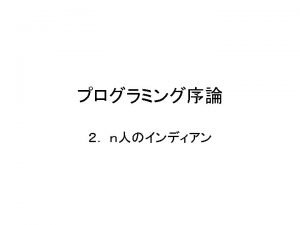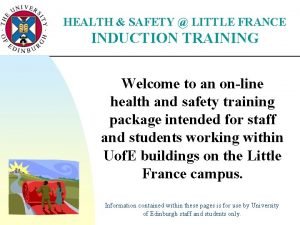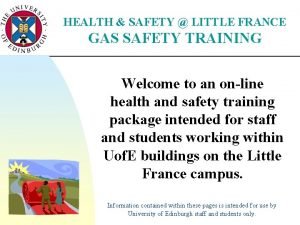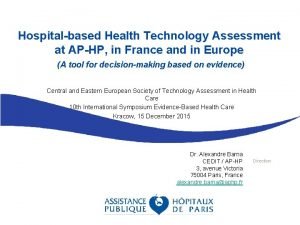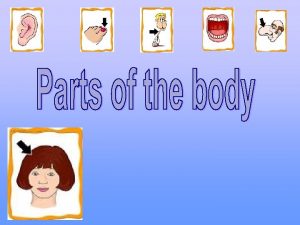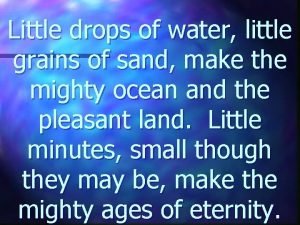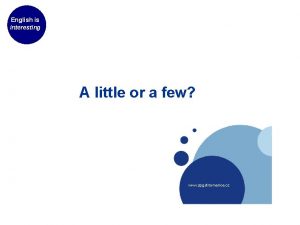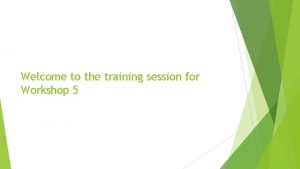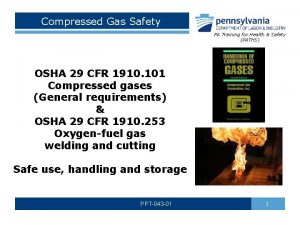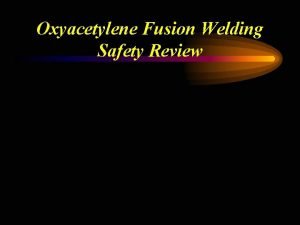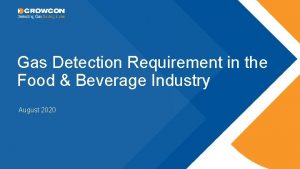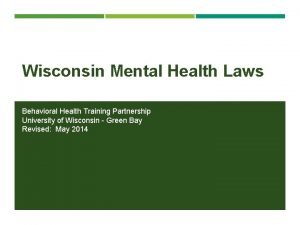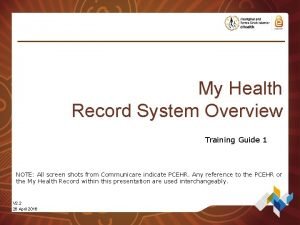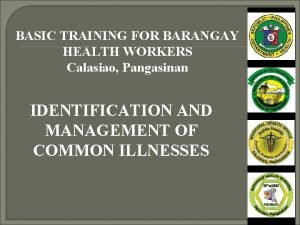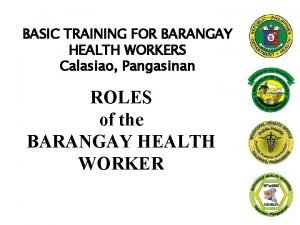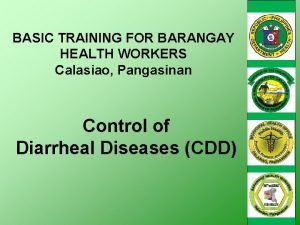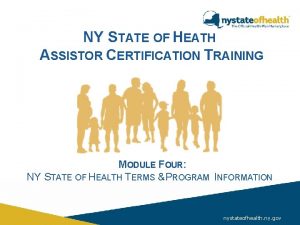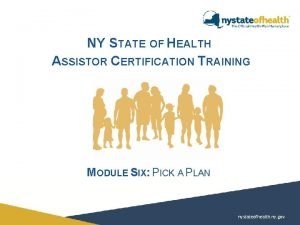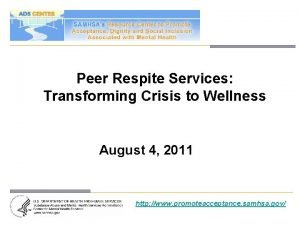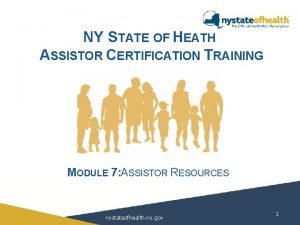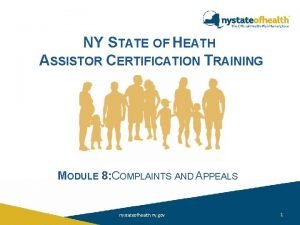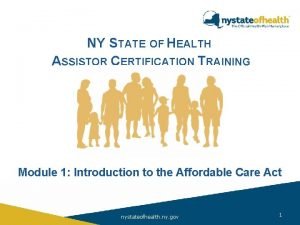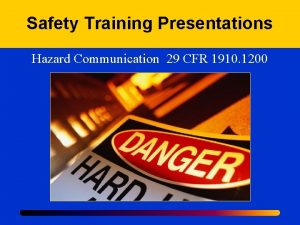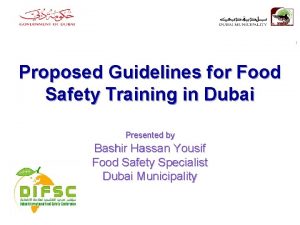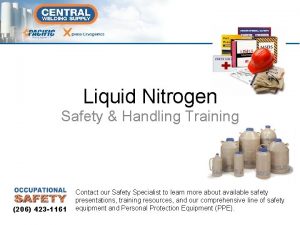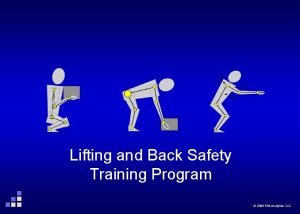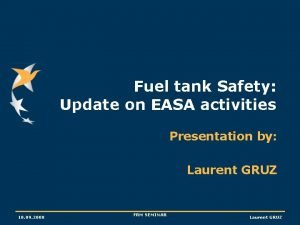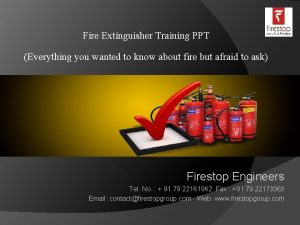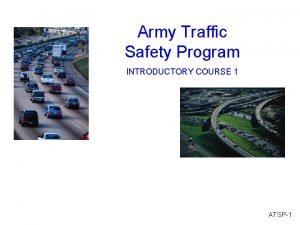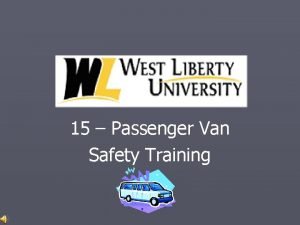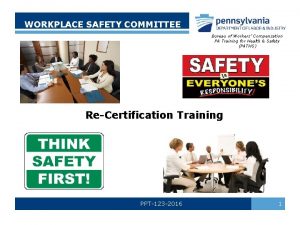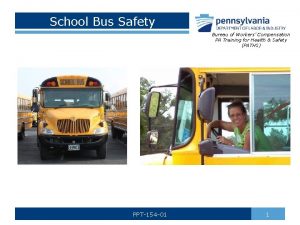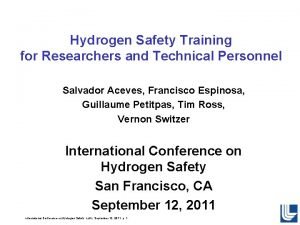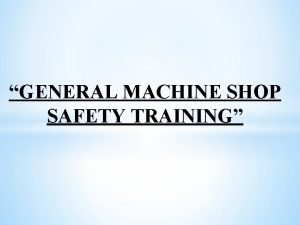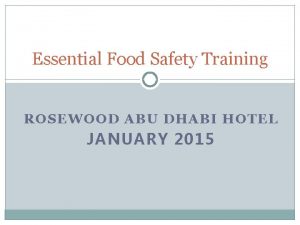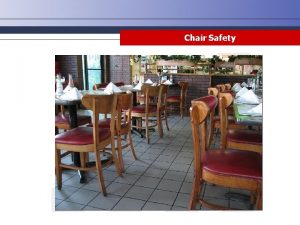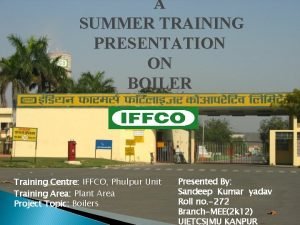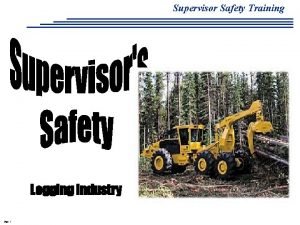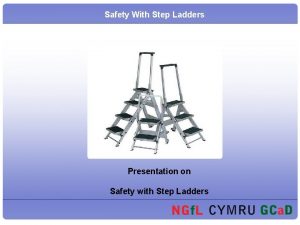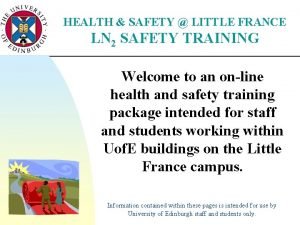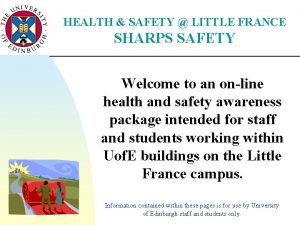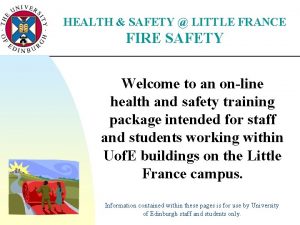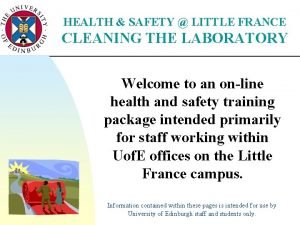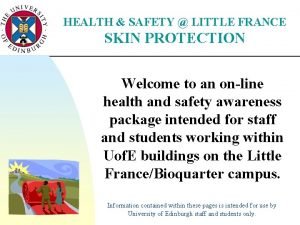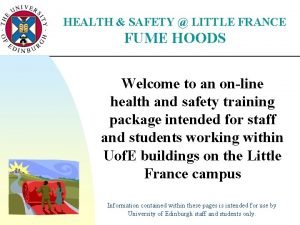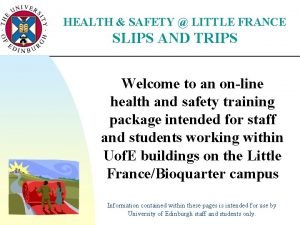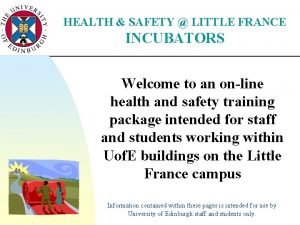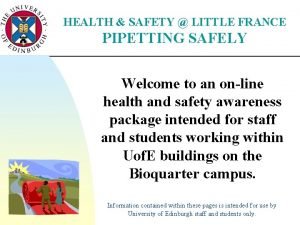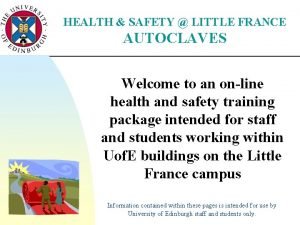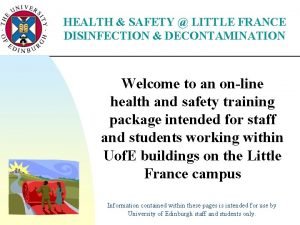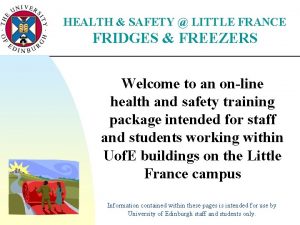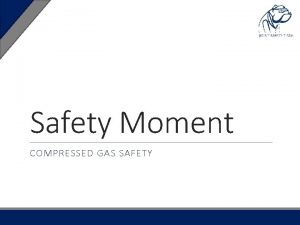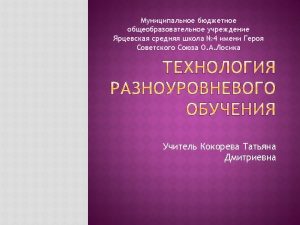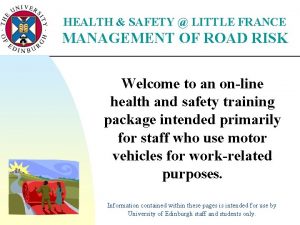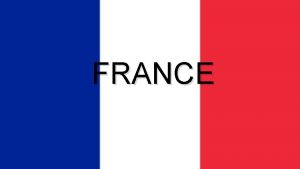HEALTH SAFETY LITTLE FRANCE GAS SAFETY TRAINING Welcome




































































- Slides: 68

HEALTH & SAFETY @ LITTLE FRANCE GAS SAFETY TRAINING Welcome to an on-line health and safety training package intended for staff and students working within Uof. E buildings on the Little France campus. Information contained within these pages is intended for use by University of Edinburgh staff and students only.

HEALTH & SAFETY @ LITTLE FRANCE GAS SAFETY TRAINING This on-line training package is intended for laboratory users of compressed and other laboratory gases, but is not a substitute for practical training, which will be organised by laboratory managers as required. A separate training package is available for liquid nitrogen-related hazards. Last updated: February, 2018

HEALTH & SAFETY @ LITTLE FRANCE GAS SAFETY TRAINING Please take time to view the following material, and direct any urgent questions to your H&S Advisor, Laboratory Manager, or the Little France Buildings H&S Manager (the contact details for whom are shown on the last page of this presentation). Thank you

HEALTH & SAFETY @ LITTLE FRANCE GAS SAFETY TRAINING Why do we need to take this so seriously?

HEALTH & SAFETY @ LITTLE FRANCE GAS SAFETY TRAINING … which may translate into major damage to property

HEALTH & SAFETY @ LITTLE FRANCE GAS SAFETY TRAINING Even a small camping gas cylinder explosion can have major consequences

HEALTH & SAFETY @ LITTLE FRANCE GAS SAFETY TRAINING Basic Safety (1) • Don’t make your first time connecting a regulator to a gas cylinder be a time when you are on your own. • Seek instruction from an experienced operator, and ensure that you are aware of all that is required to ensure your safety and that of others. • Be certain of your competence before then proceeding to do such work yourself.

HEALTH & SAFETY @ LITTLE FRANCE GAS SAFETY TRAINING Basic Safety (2) • Seek expert advice also if you are a first time user of a gas and/or an unfamiliar gas supply system (e. g. a gas generator). • Justify use of the gas, having considered less hazardous alternatives that may well exist in order for you to achieve the same experimental objectives or analytical outcome.

HEALTH & SAFETY @ LITTLE FRANCE GAS SAFETY TRAINING Basic Safety (3) • Select the least hazardous gas that will achieve the desired effect. • Obtain an appropriate Material Safety Data Sheet (MSDS), and be familiar with the physical, chemical and toxicological properties of the gas to be used. • Undertake all appropriate risk assessments, and prepare a written Safe System of Work.

HEALTH & SAFETY @ LITTLE FRANCE GAS SAFETY TRAINING Basic Safety (4) • Do not commence any practical work until all appropriate risk assessments and Safe Systems of Work have been prepared, and these have been endorsed by the relevant Principal Investigator(s) and signed by all those who will be undertaking work using the specified gases and associated equipment. • There should be no exceptions to this essential safety requirement.

HEALTH & SAFETY @ LITTLE FRANCE GAS SAFETY TRAINING Basic Safety (5) • Consider the least hazardous practical method of delivering gas to where work is to be done (e. g. supply by pipelines from tanks external to buildings, use of gas generators, etc). • Consider room ventilation as a factor in the event of unplanned leakage. • Prepare a gas leak emergency plan.

HEALTH & SAFETY @ LITTLE FRANCE GAS SAFETY TRAINING Basic Safety (6) • Purchase and stock only the necessary quantities of each gas that is required. • Display appropriate safety signage. • Undertake relevant training. • Provide appropriate supervision, particularly for less experienced users. • Consider possible need for oxygen depletion monitoring, or monitoring for specific gases.

HEALTH & SAFETY @ LITTLE FRANCE GAS SAFETY TRAINING Basic Safety (7) • When taking delivery of gas cylinders, ensure that a competent person checks them for leaks and visually inspects each cylinder for damage. • Check for proper labelling. • Do not tamper with cylinders, pressure relief devices or regulators. • Do not attempt to repair or disguise damage to a cylinder.

HEALTH & SAFETY @ LITTLE FRANCE GAS SAFETY TRAINING Basic Safety (8) • If a cylinder is damaged, or is in poor condition, and/or is leaking, or the contents are unknown, return the cylinder to the supplier. • Wear appropriate foot protection when moving or transporting cylinders. • Other personal protective clothing and equipment must be worn as appropriate.

HEALTH & SAFETY @ LITTLE FRANCE GAS SAFETY TRAINING Basic Safety (9) • Do not sniff the gas to confirm what it is (Amazingly, some people do!), even when you think that you know what it is and believe that it is “safe”. • Identify gases from cylinder labels. Explanations of cylinder colour codes are widely available from a variety of sources.

HEALTH & SAFETY @ LITTLE FRANCE GAS SAFETY TRAINING Basic Safety (10) • Oil or grease must never be used on gas equipment, especially on oxygen cylinders; the oil or grease may ignite or explode. • PTFE tape or jointing compound should never be used to attempt to seal leaks. • Flammable gas cylinders have a left hand thread to help distinguish them. • Only correctly fitting tools/spanners should be used when fitting regulators to avoid damaging screw fittings on cylinders and regulators.

HEALTH & SAFETY @ LITTLE FRANCE GAS SAFETY TRAINING Characteristics of Gases It’s important for users (and all others who will be handling gases in Stores etc) to be aware of the characteristics of the gases that they may come into contact with, since this will have a powerful bearing on how precisely they should be used (and stored) with minimum risk to all concerned.

HEALTH & SAFETY @ LITTLE FRANCE GAS SAFETY TRAINING Implications for Ventilation Gas Heavier than Air Argon Yes Helium No Oxygen Yes Acetylene No Propane Yes Hydrogen No Carbon dioxide Yes Nitrogen No Relative Weight 1. 38 0. 14 1. 1 0. 9 1. 5 0. 07 1. 52 0. 97 So, knowing these characteristics, for example, where would you place ventilation within a lab or store that you were designing or managing?

HEALTH & SAFETY @ LITTLE FRANCE GAS SAFETY TRAINING Labelling (1) • Only correctly labelled and colourcoded cylinders should be used. • If in any doubt, at any time (and for any reason at all) regarding the contents of a gas cylinder, simply DO NOT USE IT! Seek and get help from a competent person.

HEALTH & SAFETY @ LITTLE FRANCE GAS SAFETY TRAINING Labelling (2) • The information on the label (the primary means of identification) and the colour of the cylinder (the secondary means of identification) should always match. • Or they should match. . . If they don’t, DON’T USE THE CYLINDER.

HEALTH & SAFETY @ LITTLE FRANCE GAS SAFETY TRAINING Labelling (3) Source: BOC Industrial - A trading name of BOC Limited

HEALTH & SAFETY @ LITTLE FRANCE GAS SAFETY TRAINING Labelling (4) EU Compressed Gas Cylinder Colour Codes

HEALTH & SAFETY @ LITTLE FRANCE GAS SAFETY TRAINING Labelling (5) Labels on the regulator are equally important for safety purposes, and should be checked regularly to ensure that the regulator is correct for the gas being used, that the maximum inlet pressure is at least as high as the cylinder content pressure, and that the regulator is within service date.

HEALTH & SAFETY @ LITTLE FRANCE GAS SAFETY TRAINING Labelling (6) Once again, if in doubt, don’t just take a gamble on the regulator being the right type and within service date. ASK!

HEALTH & SAFETY @ LITTLE FRANCE GAS SAFETY TRAINING Cylinder Storage (1) • Store cylinders only in designated places, which should be wellventilated and secured against unauthorised intrusion. • Comply with Stores policies and general emergency procedures.

HEALTH & SAFETY @ LITTLE FRANCE GAS SAFETY TRAINING Cylinder Storage (2) • Cylinders must be kept away from electrical wiring where the cylinder could become part of the circuit. • Protect cylinders from corrosive chemicals, vapours and sources of heat and fire. • Store oxygen cylinders a minimum of twenty feet from flammable gas. cylinders or combustible materials.

HEALTH & SAFETY @ LITTLE FRANCE GAS SAFETY TRAINING Cylinder Storage (3) Cylinders should be stored in compatible groups, separating: • Flammables from Oxidizers; • Corrosives from Flammables; and • Full cylinders from Empties (Empty cylinders should be stored as carefully as those that are full, because residues of gas are likely still to be present).

HEALTH & SAFETY @ LITTLE FRANCE GAS SAFETY TRAINING Cylinder Storage (4) • Display appropriate signage both within Stores and wherever gas cylinders are ultimately to be located within buildings. • Even if you know what’s in the lab, attending fire-fighters will not, and they need to be forewarned before entering labs etc.

HEALTH & SAFETY @ LITTLE FRANCE GAS SAFETY TRAINING Cylinder Storage (5) • Store cylinders in an upright position. • Smoking and naked flames must be prohibited around gas bottle stores. • The Dangerous Substances and Explosive Atmosphere Regulations (DSEAR)* may apply in some cases, and additional risk assessments may have to be done. * http: //www. hse. gov. uk/fireandexplosion/dsear. htm

HEALTH & SAFETY @ LITTLE FRANCE GAS SAFETY TRAINING Cylinder Storage (6) • Compressed gas cylinders should be secured firmly at all times, including during transport. • A clamp and belt or chain, securing the cylinder between “waist” and “shoulder” to a trolley, wall, frame or bench, are generally suitable for this purpose.

HEALTH & SAFETY @ LITTLE FRANCE GAS SAFETY TRAINING Cylinder Storage (7) • Cylinders should be individually secured (Using a single restraint strap around a number of cylinders is not acceptable). • Keep protective valve caps in place when the cylinder is not in use. • Keep valves closed on empty cylinders.

HEALTH & SAFETY @ LITTLE FRANCE GAS SAFETY TRAINING Moving Cylinders (1) • Do not roll, drag or slide cylinders. • Use a cylinder trolley, and secure cylinders to the trolley with a chain. • Do not steer or handle cylinders using the protective valve cap or regulator. • Take steps to avoid dropping cylinders or permitting them to strike each other violently or to be handled roughly.

HEALTH & SAFETY @ LITTLE FRANCE GAS SAFETY TRAINING Moving Cylinders (2) • In general, regulators should be removed, valves closed and protective valve caps put in place before cylinders are moved. • Do not transport cylinders in lifts together with passengers.

HEALTH & SAFETY @ LITTLE FRANCE GAS SAFETY TRAINING Moving Cylinders (3) • Use appropriate PPE (e. g. gloves and safety boots). • Comply with guidance regarding safe manual handling operations, and seek manual handling training if necessary. • It’s always worth remembering that a large full gas cylinder on a trolley can weigh in excess of 100 kgs.

HEALTH & SAFETY @ LITTLE FRANCE GAS SAFETY TRAINING Cylinder Use (1) • A minimum number of cylinders should be present in the lab. • Do not make it a practice to store more reserve cylinders in the lab than can be justified. • COSHH (and possibly DSEAR) risk assessments must be done. • Only ever use the correct regulator, which must be attached by a competent person. • Ensure that all connections remain secure.

HEALTH & SAFETY @ LITTLE FRANCE GAS SAFETY TRAINING Cylinder Use (2) • Use an approved leak detection fluid (not soapy water) to locate leaks. • Keep cylinders valves, regulators, couplings, hose and apparatus clean and free of oil and grease (which, in the presence of pressurised pure oxygen, can cause an explosion). • Make regular checks, and service as appropriate in accordance with manufacturers instructions.

HEALTH & SAFETY @ LITTLE FRANCE GAS SAFETY TRAINING Cylinder Use (3) • Keep cylinders away from open flames and sources of heat. • Locate cylinders away from doorways and emergency escape routes and exits. • Ensure that the presence of compressed and flammable gas cylinders is appropriately signed at all entrances to the laboratory.

HEALTH & SAFETY @ LITTLE FRANCE GAS SAFETY TRAINING Cylinder Use (4) By the same token, ensure that gas hazard signage is removed after the work is decommissioned and cylinders have been removed from an area, otherwise attending firefighters may delay entry into an area within which they have reason to suspect the presence of compressed gases, etc.

HEALTH & SAFETY @ LITTLE FRANCE GAS SAFETY TRAINING Cylinder Use (5) • Safety devices and valves must not be tampered with. • Repairs should only be carried out by properly qualified engineers. • Use flashback arrestors and reverseflow check valves to prevent flashback when using oxy-fuel mixtures.

HEALTH & SAFETY @ LITTLE FRANCE GAS SAFETY TRAINING Cylinder Use (6) • Where any gas is to be passed through a reaction vessel, a pressure release device and a trap to prevent suck-back should be used in the following arrangement: Cylinder; o Regulator; o Valve (where provided); o Suck-back trap, pressure relief device; o Reaction vessel. o

HEALTH & SAFETY @ LITTLE FRANCE GAS SAFETY TRAINING Cylinder Use (7) • Regulators should be removed when cylinders are empty and before they are moved. • Cylinders are normally used and stored only in an upright position. • Cylinder valves should always be opened slowly. • Stand away from the back and face of the gauge when opening cylinder valves.

HEALTH & SAFETY @ LITTLE FRANCE GAS SAFETY TRAINING Cylinder Use (8) • When a special wrench is required to open a cylinder or manifold valve, the wrench shall be left in place on the valve stem when in use (This precaution is taken so the gas supply can be shut off quickly in case of an emergency).

HEALTH & SAFETY @ LITTLE FRANCE GAS SAFETY TRAINING Cylinder Use (9) • Nothing should be placed on top of a cylinder that may damage the regulator or interfere with quick closing of the valve. • Appropriate fire extinguishing equipment should be readily available alongside apparatus when using flammable gases, but … Do not place yourself or others in danger by attempting to fight a fire involving compressed gas cylinders.

HEALTH & SAFETY @ LITTLE FRANCE GAS SAFETY TRAINING Cylinder Use (10) • Not all cylinders are equipped with pressure relief valves (most seamless construction cylinders don’t). • Where such cylinders become caught up in fire, they will be unable to release pressure as fast as it’s being increased by external heating, and there will be a real risk of explosion.

HEALTH & SAFETY @ LITTLE FRANCE GAS SAFETY TRAINING Things Not To Do (1) • Never roll a cylinder to move it over a long distance. • Never carry a cylinder by the valve. • Never leave an cylinder unattended with the valve open to atmosphere. • Never leave a cylinder standing unsecured to a trolley, wall or bench etc. • Never force improper attachments onto a cylinder.

HEALTH & SAFETY @ LITTLE FRANCE GAS SAFETY TRAINING Things Not To Do (2) • Never grease or oil the regulator, valve or fittings of an oxygen cylinder, and do not use PTFE tape (which contains oils that may react violently in contact with some gases). • Never attempt to refill or mix gases in a cylinder.

HEALTH & SAFETY @ LITTLE FRANCE GAS SAFETY TRAINING Things Not To Do (3) • Never use a flame to locate gas leaks (Yes, some people have actually done that … though few have actually survived the experience). • Never discard pressurized cylinders into inappropriate waste streams. • Never attempt to repair a damaged cylinder – Report it and request help from a competent gas cylinder engineer.

HEALTH & SAFETY @ LITTLE FRANCE GAS SAFETY TRAINING Toxic Gases Special precautions are necessary when using poisonous or highly toxic gases, which include: Arsine (As. H 3); o Ethylene oxide (Et. O); o Hydrogen cyanide (HCN); o Nitric oxide (NO); and o Phosphine (PH 3). o

HEALTH & SAFETY @ LITTLE FRANCE GAS SAFETY TRAINING Special considerations apply also to radioactive gases, including a requirement to prepare a special safe system of work (which, in turn, must be approved - before commencement of work - by radiation protection specialists).

HEALTH & SAFETY @ LITTLE FRANCE GAS SAFETY TRAINING Other Special Hazards If an acetylene, hydrogen (including any gas mixture containing more than 5% H 2), methane or carbon monoxide cylinder may be required, you must first consult your laboratory’s Health & Safety Adviser.

HEALTH & SAFETY @ LITTLE FRANCE GAS SAFETY TRAINING In Case of Emergency (1) • In the event of a fire involving or threatening compressed gas cylinders, raise the alarm using a fire alarm call point at the closest safe location. • Of course, this should be your very first reaction upon discovering any fire at all, whether or not compressed gas cylinders are involved.

HEALTH & SAFETY @ LITTLE FRANCE GAS SAFETY TRAINING In Case of Emergency (2) • The minimum safe distance to evacuate from a fire involving a compressed gas cylinder is 100 m, and others within a distance of 300 m should be advised to shelter within buildings away from the scene. • However ….

HEALTH & SAFETY @ LITTLE FRANCE GAS SAFETY TRAINING In Case of Emergency (3) When the fire alarms are sounding continuously, people should be leaving the building anyway, and heading directly to the designated Evacuation Assembly Point for their building ….

HEALTH & SAFETY @ LITTLE FRANCE GAS SAFETY TRAINING EAP for QMRI EAP for CRIC EAP for CB

HEALTH & SAFETY @ LITTLE FRANCE GAS SAFETY TRAINING EAP for SCRM

HEALTH & SAFETY @ LITTLE FRANCE GAS SAFETY TRAINING In Case of Emergency (4) • Then, summon the emergency services by dialling 2222 from any telephone extension at a safe location, and report the precise location and nature of the emergency. • Do not put yourself or others at risk by attempting to fight a fire involving compressed gas cylinders.

HEALTH & SAFETY @ LITTLE FRANCE GAS SAFETY TRAINING In Case of Emergency (5) • Summon medical assistance for casualties. • Even after a fire has been extinguished, compressed gas cylinders are likely to remain hot, and they may still explode. • Do not, therefore, re-enter the area until told by a Fire Officer that it is safe to do so. • Complete and submit an accident report using the on-line form at: http: //www. ed. ac. uk/schools-departments/healthsafety/accident-reporting/reporting-form/form

HEALTH & SAFETY @ LITTLE FRANCE GAS SAFETY TRAINING From The Daily Telegraph 11 th December 2001 WARD SMOKER SETS BEARD ALIGHT Firemen moved nineteen elderly bed-bound patients to safety from a smoke-filled ward after a man set fire to his beard while having a furtive cigarette. He escaped with a red nose, blackened glasses and badly singed facial hair. The patient, who is in his seventies, removed his oxygen mask to light a hand-rolled cigarette in the middle of the night at St, Mary's Hospital, Portsmouth. But he accidentally set fire to his beard and, while trying to put out the flames, set fire to a bag under his bed. O 2 + fire … It could have been much worse!

HEALTH & SAFETY @ LITTLE FRANCE GAS SAFETY TRAINING

HEALTH & SAFETY @ LITTLE FRANCE GAS SAFETY TRAINING Which is one more reason for giving up smoking … But, if you really must … please use a designated smoking shelter. And NEVER smoke in the vicinity of the compressed gas cylinder store!!

HEALTH & SAFETY @ LITTLE FRANCE GAS SAFETY TRAINING Risk Assessment • Risk assessments are required for all procedures involving the storage, use, dispensing and movement of compressed gases. • Safe Systems of Work must be prepared, endorsed by the relevant Principal Investigator(s), and then read (and signedoff) by everyone who will be using compressed gases.

HEALTH & SAFETY @ LITTLE FRANCE GAS SAFETY TRAINING Training • This presentation represents the very basic minimum level of understanding the a potential user must have before even considering work with gases. • More intensive training may well be required, and several options are readily available. • Records must be kept relating to training for personnel and maintenance of equipment.

HEALTH & SAFETY @ LITTLE FRANCE GAS SAFETY TRAINING Competence (1) • Users should be able to correctly identify gases from information displayed on cylinders. • Users should know how, correctly and safely, to operate cylinders and all associated equipment such as regulators. • Users should be aware of the hazards of working with gases, such as the potential for asphyxia, as well as the risks of operating in oxygen-enriched environments where applicable.

HEALTH & SAFETY @ LITTLE FRANCE GAS SAFETY TRAINING Competence (2) • Users should be able to identify the flammability characteristics of certain gases, and know also how to minimise the associated risks. • Users should be able to correctly select and use all relevant gas control equipment. • Users should know and be able to properly apply all key stages in the safe use of gas cylinders.

HEALTH & SAFETY @ LITTLE FRANCE GAS SAFETY TRAINING Competence (3) • Users should know the risks of moving and handling gas cylinders, and know also how to do so safely. • Users should also be aware of the requirements governing safe storage of gases. • Finally, and not least, users should be capable of preparing suitable and sufficient Risk Assessments and Safe Systems of Work related to all aspects of the use of gas in the workplace, ensuring that risk is reduced to a level that is as low as reasonably practicable.

HEALTH & SAFETY @ LITTLE FRANCE GAS SAFETY TRAINING And finally … The key take-home message relating to this presentation on gas safety should be, “If in doubt, at any time, on any aspect at all, ASK. Do NOT just press ahead and hope for the best. It may be the very last thing that you ever do!!

HEALTH & SAFETY @ LITTLE FRANCE GAS SAFETY TRAINING Lindsay Murray Health & Safety Manager, The University of Edinburgh, College of Medicine & Veterinary Medicine (Little France/Bioquarter campus) Room SU 225, Chancellor’s Building Ext: 26390 lgm@staffmail. ed. ac. uk

HEALTH & SAFETY @ LITTLE FRANCE GAS SAFETY TRAINING You have now completed this on-line training package summarising key aspects of gas safety arrangements for the Little France site. Please also attend any practical training that may be organised by your laboratory manager. Thank you
 Ten little indian boys poem
Ten little indian boys poem 1 little 2 little 3 little indian
1 little 2 little 3 little indian Qmri little france
Qmri little france Qmri little france
Qmri little france Qbs safety care
Qbs safety care Training and support in france
Training and support in france Wise men three clever are we
Wise men three clever are we Hospital based health technology assessment
Hospital based health technology assessment Pseudo reduced specific volume
Pseudo reduced specific volume An ideal gas is an imaginary gas
An ideal gas is an imaginary gas Gas law
Gas law Ideal gas vs perfect gas
Ideal gas vs perfect gas Conclusion bhopal gas tragedy
Conclusion bhopal gas tragedy Gas leaked in bhopal gas tragedy
Gas leaked in bhopal gas tragedy Volume molare
Volume molare Flue gas desulfurisation gas filter
Flue gas desulfurisation gas filter Poisonous gas leaked in bhopal gas tragedy
Poisonous gas leaked in bhopal gas tragedy Difference between ideal gas and real gas
Difference between ideal gas and real gas Reaksi pembentukan gas no2f dari gas no2 dan f2
Reaksi pembentukan gas no2f dari gas no2 dan f2 Gas exchange key events in gas exchange
Gas exchange key events in gas exchange Two little hands to clap clap clap
Two little hands to clap clap clap A little and little meaning
A little and little meaning Make the mighty ocean
Make the mighty ocean Litle a
Litle a Little mouse little mouse where is your house
Little mouse little mouse where is your house Adverb little
Adverb little Fill in a few a little
Fill in a few a little Complete the sentences with a little or a few
Complete the sentences with a little or a few Welcome to the training session
Welcome to the training session Compressed gas cylinder safety ppt
Compressed gas cylinder safety ppt Oxy acetylene safety rules
Oxy acetylene safety rules Food & beverage gas safety monitors
Food & beverage gas safety monitors Training is expensive without training it is more expensive
Training is expensive without training it is more expensive Metode of the job training
Metode of the job training Aggression replacement training facilitator training
Aggression replacement training facilitator training Behavioral health training partnership
Behavioral health training partnership My health record training
My health record training Golden thread clinical documentation
Golden thread clinical documentation Basic training for barangay health workers
Basic training for barangay health workers Basic training for barangay health workers
Basic training for barangay health workers Basic training for barangay health workers
Basic training for barangay health workers We can talk mental health training
We can talk mental health training Basic training for barangay health workers
Basic training for barangay health workers Ny state of health assistor certification training
Ny state of health assistor certification training Ny state of health assistor certification training
Ny state of health assistor certification training Georgia mental health consumer network cps training
Georgia mental health consumer network cps training Nystateofhealth account
Nystateofhealth account Ny state of health assistor certification training
Ny state of health assistor certification training Ny state of health assistor certification training
Ny state of health assistor certification training Hazard communication safety training quiz answers
Hazard communication safety training quiz answers Food safety training in dubai
Food safety training in dubai Liquid nitrogen safety training
Liquid nitrogen safety training Back safety training
Back safety training Fuel tank safety training
Fuel tank safety training Basic fire fighting training ppt
Basic fire fighting training ppt Army traffic safety program
Army traffic safety program 15-passenger van quiz answer key
15-passenger van quiz answer key Pa safety committee
Pa safety committee Nuclear safety training
Nuclear safety training Otiec outreach resources workgroup
Otiec outreach resources workgroup Flagman safety training ppt
Flagman safety training ppt Hydrogen safety training
Hydrogen safety training Machine shop safety training
Machine shop safety training Hot holding temperature in dubai
Hot holding temperature in dubai Chair inspection checklist
Chair inspection checklist Boiler training ppt
Boiler training ppt Hand tools ppt
Hand tools ppt Supervisor safety training topics
Supervisor safety training topics Ladder safety presentation
Ladder safety presentation

